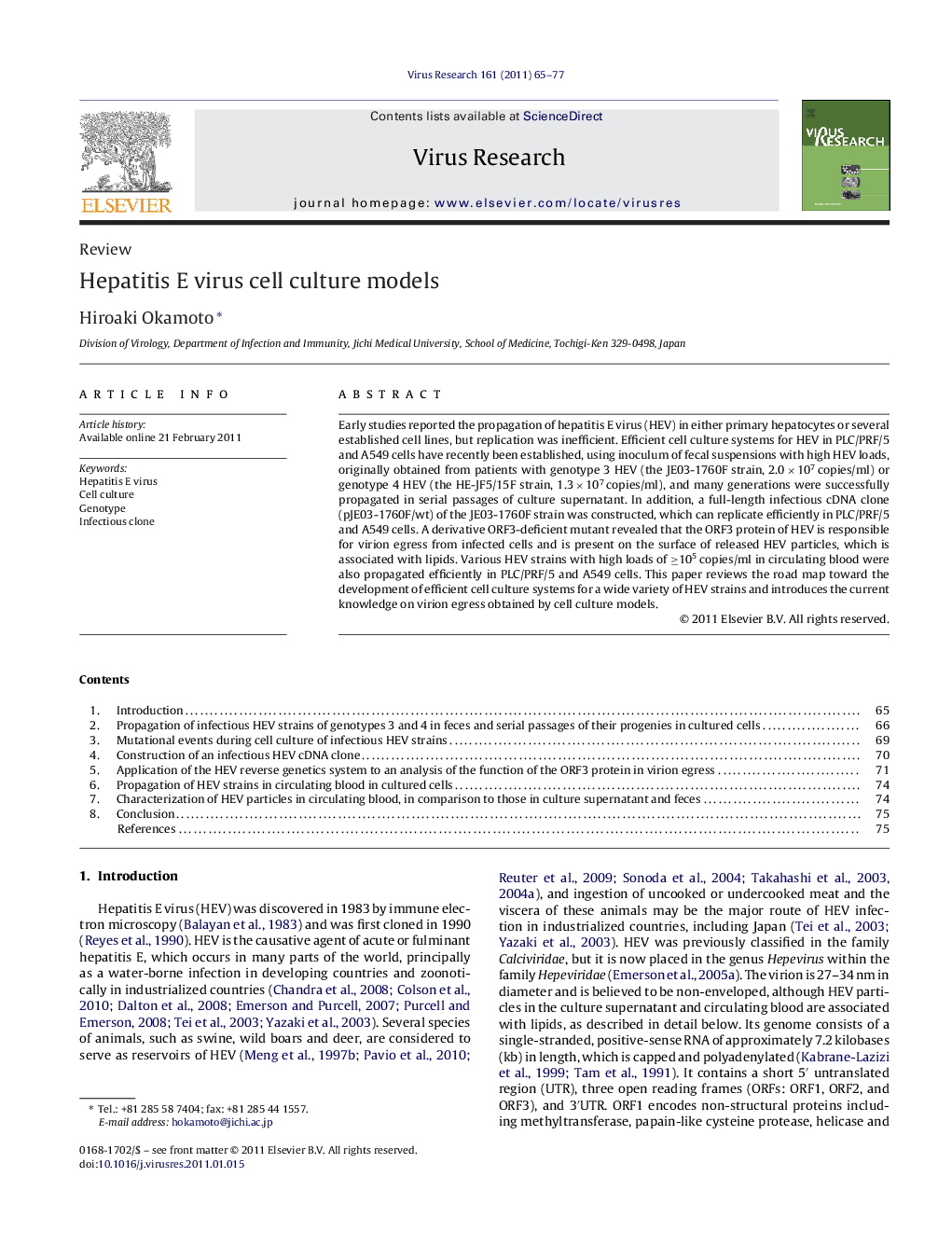| Article ID | Journal | Published Year | Pages | File Type |
|---|---|---|---|---|
| 3428976 | Virus Research | 2011 | 13 Pages |
Early studies reported the propagation of hepatitis E virus (HEV) in either primary hepatocytes or several established cell lines, but replication was inefficient. Efficient cell culture systems for HEV in PLC/PRF/5 and A549 cells have recently been established, using inoculum of fecal suspensions with high HEV loads, originally obtained from patients with genotype 3 HEV (the JE03-1760F strain, 2.0 × 107 copies/ml) or genotype 4 HEV (the HE-JF5/15F strain, 1.3 × 107 copies/ml), and many generations were successfully propagated in serial passages of culture supernatant. In addition, a full-length infectious cDNA clone (pJE03-1760F/wt) of the JE03-1760F strain was constructed, which can replicate efficiently in PLC/PRF/5 and A549 cells. A derivative ORF3-deficient mutant revealed that the ORF3 protein of HEV is responsible for virion egress from infected cells and is present on the surface of released HEV particles, which is associated with lipids. Various HEV strains with high loads of ≥105 copies/ml in circulating blood were also propagated efficiently in PLC/PRF/5 and A549 cells. This paper reviews the road map toward the development of efficient cell culture systems for a wide variety of HEV strains and introduces the current knowledge on virion egress obtained by cell culture models.
